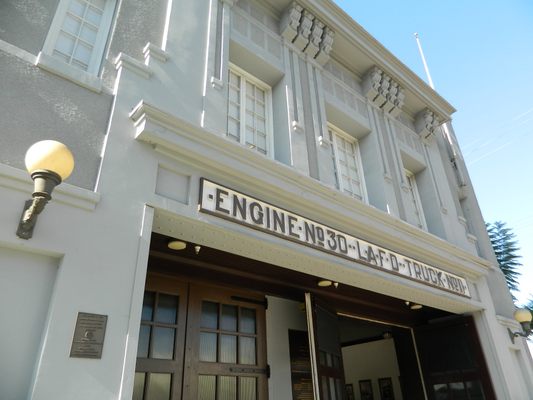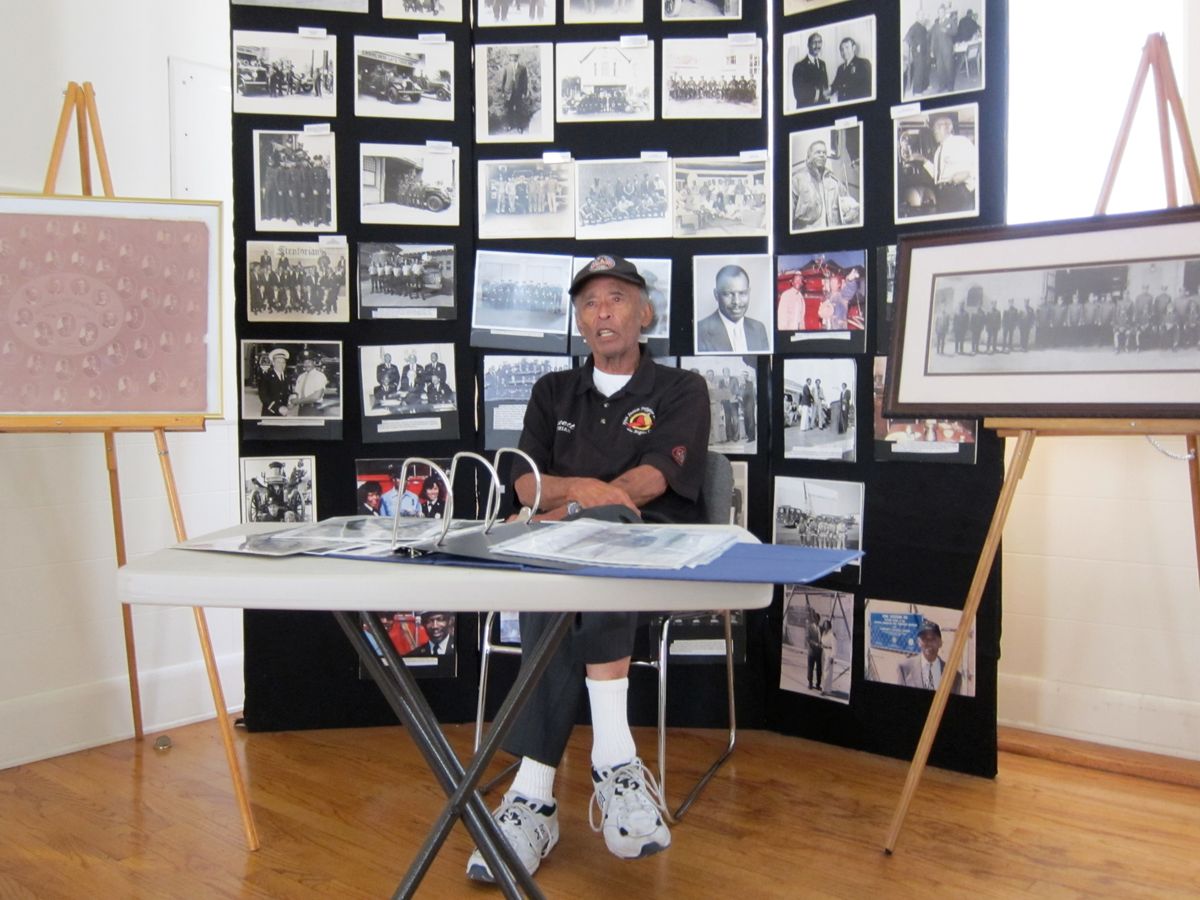About
The Museum of African American Firefighters is located at old Fire Station 30 in Downtown Los Angeles. The historic fire station was established in 1913 and served as one of two segregated fire stations in L.A. between 1924 and 1955. The museum's exhibitions seek to educate the public on the racial discrimination that Black firefighters faced throughout history, as well as to celebrate their profound achievements.
The exhibitions span almost a century of Black history in fire service and includes a variety of firefighter paraphernalia, from a 1940s ladder truck to a hunky "2008 Los Angeles Men of Fire" calendar. Perhaps what stands out most, however, are the displays that share the stories of former Black firefighters' struggles during their time of service.
Article clippings, old photos, and letters are all on view. Visitors can read countless stories of how Black firefighters were segregated from their white colleagues, forced to sleep on isolated cots near the bathroom. Treated as second-class citizens, they were made to scrub toilets, eat alone in silence, and told to stand four human spaces away from white firefighters during line-ups and inspections.
Most of the stories were compiled by the museum's historian, Arnett Hartsfield, who served in the LAFD between 1940 and 1961. Hartsfield was never promoted during his 20 years of working at the fire department, which earned him his nickname as the "Eternal Rookie."
Born in 1918, Hartsfield saw his fair share of discrimination—but also of progress and positivity. He was a member of the "Old Stentorians," a group of LA African-American firefighters who banded together in the 1950s to address discrimination. Today, the stories of the Stentorians are showcased throughout the museum, along with the awards and achievements of Black firefighters—men and women—who have since gone on to hold prominent positions of power.
Though Harstfield was on the Board of Trustees of the museum, and though he has even earned a Lifetime Achievement Award from the LAFD (the first of its kind!), he volunteered at the museum two days a week in order to share his stories with curious visitors. He would gladly talk to guests about his life history and pension plan, but was most enthusiastic about encouraging people to stop complaining and, instead, "be grateful for the things that you don't have, that you don't want."
At 91 years old, Hartsfield said he was just happy "to be able to feel the aches and pains of being old" and proud to have helped turn Fire Station 30—once a symbol of oppression and shame for many Black firefighters—into a place that now honors their achievements. Hartsfield died in 2014, at the age of 96.
Related Tags
Community Contributors
Added By
Published
February 6, 2010












































